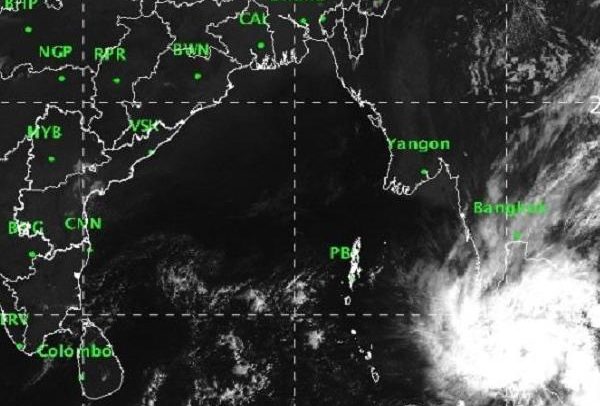Indian Meteorological Department (IMD) has alerted of heavy rains in Andaman and Nicobar Islands and its neighbouring areas from January 5 to January 7, as the tropical cyclone ‘Pabuk’ has approached.
As per the report, the sea will be on its high over Andaman Islands, Andaman Sea and adjacent regions of eastcentral and southeast Bay of Bengal from the late afternoon of 5th Jan till the morning of 7th Jan.
Since there is the possibility of the storm is going to hit the coastal areas of Odisha, The initial scare of Cyclone Pabuk has made the Odisha government on alert for seven districts including Balasore, Bhadrak, Jagatsinghpur, Kendrapara, Puri, Khurda and Ganjam.But later on Indian meterological department has said the cyclonic storm will recurve towards Myanmar,so quashed the chance of the storm to hit the coastal areas of Odisha. However, the IMD said the storm could reach the Andaman Sea by forenoon today.
Cyclone Pabuk was previously centred around 1,500 km east-southeast of Port Blair, over the South China Sea near the Gulf Thailand. It might cross the Andaman Islands around January 6 evening, as IMD said.
In the wake of the changing weather conditions, heavy rain is predicted and fishermen are warned not to venture into the Andaman Sea from January 4-7 and into neighbouring southeast and the east of the Bay of Bengal from January 6-7. Turbulent wind with a speed ranging between 40-50 kmph gusting to 60 kmph which will gradually increase up to 75 kmph is likely blow over the Andaman Sea from January 5 during this period.
The Tropical Storm also hit the southern coast of Thailand, and thousands of tourists have fled the Thai resort islands of Koh Phangan and Koh Tao before the arrival of Pabuk that supposed to bring heavy rains, wind and upto seven metre (22 foot) waves. By this, Thailand will encounter its first tropical storm in the region away from the monsoon season for around 30 years, as says the reports.

